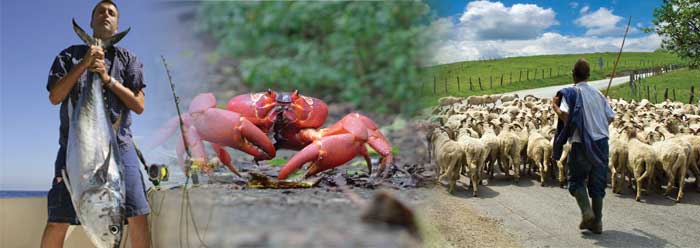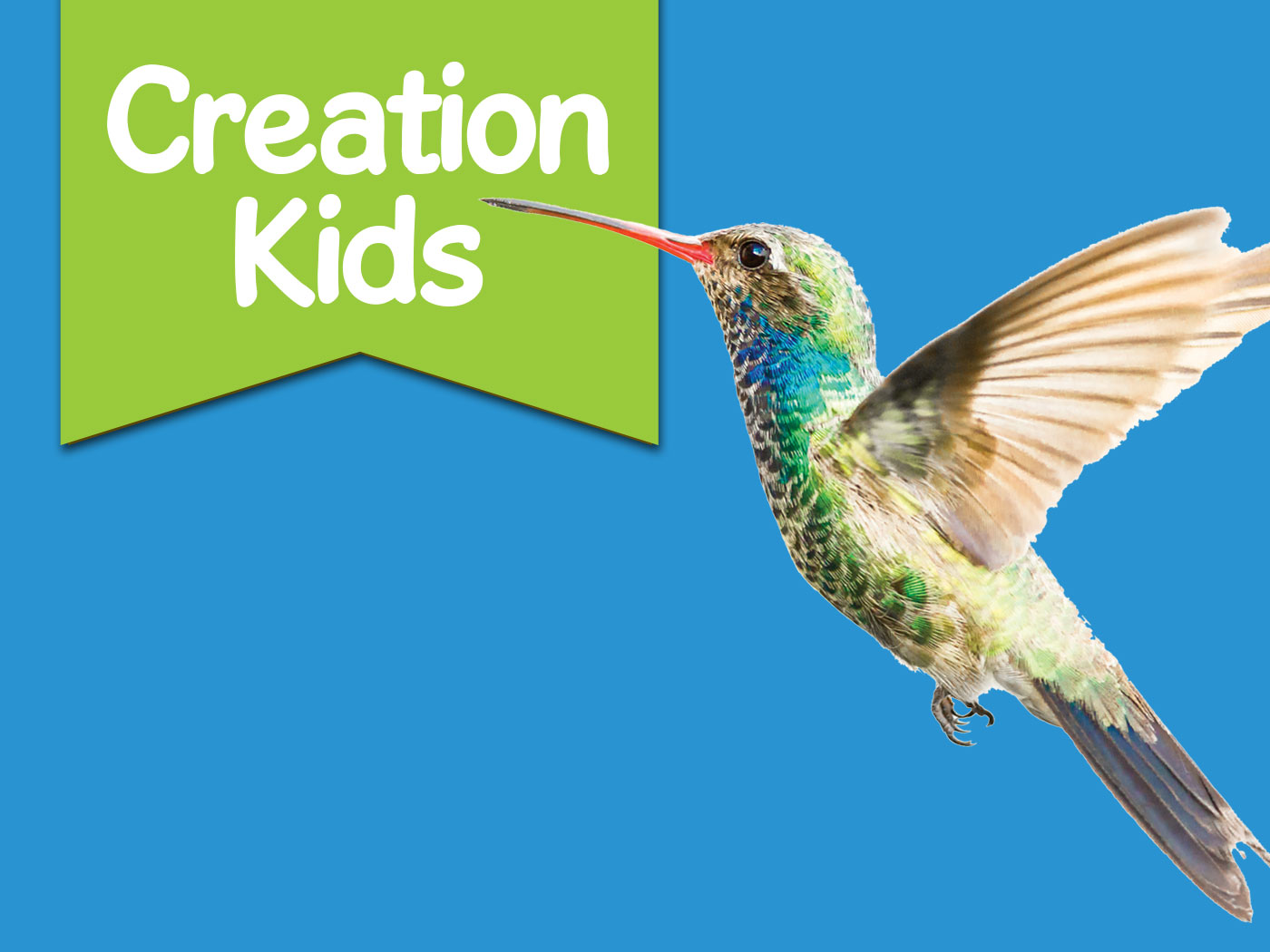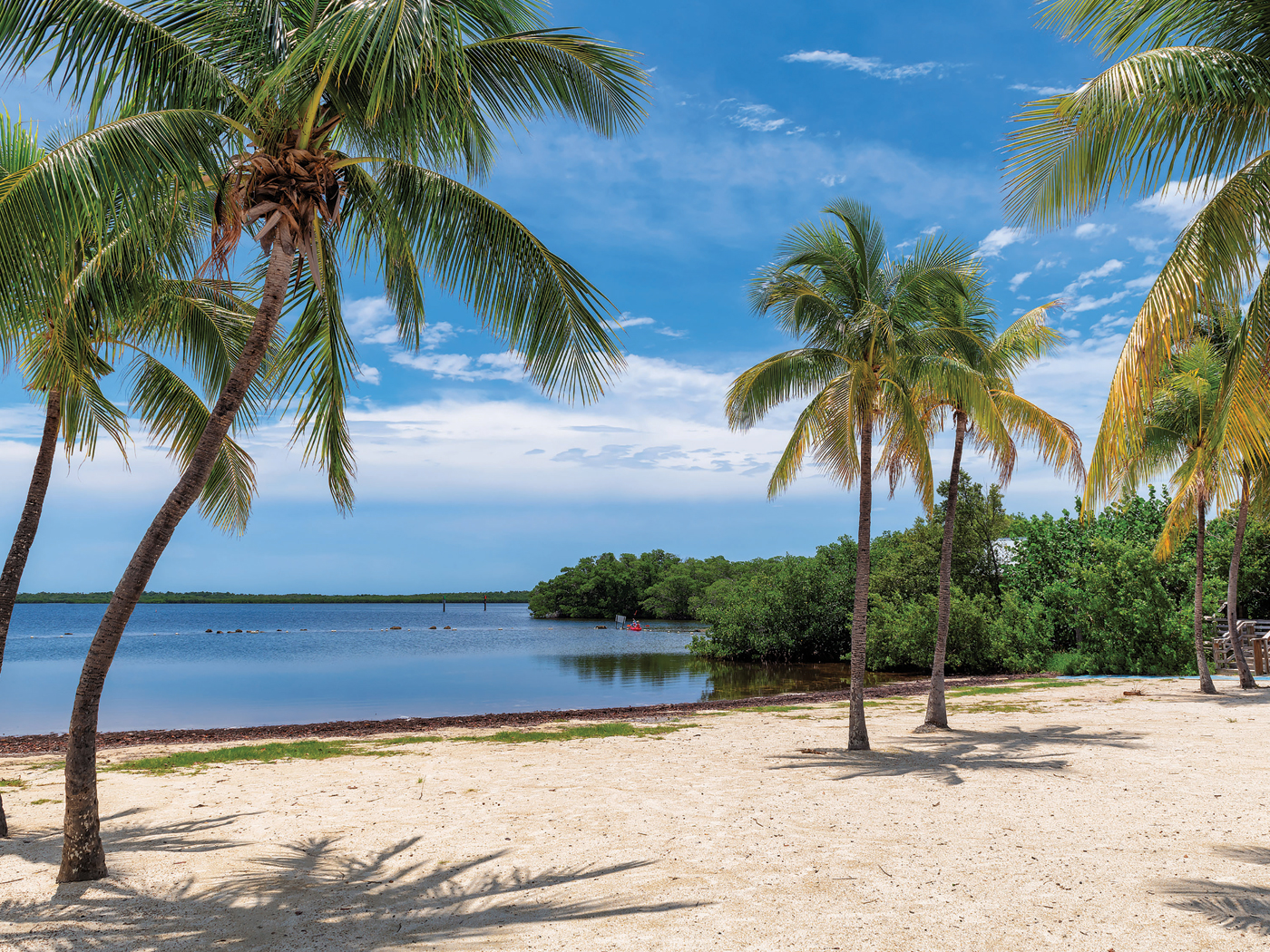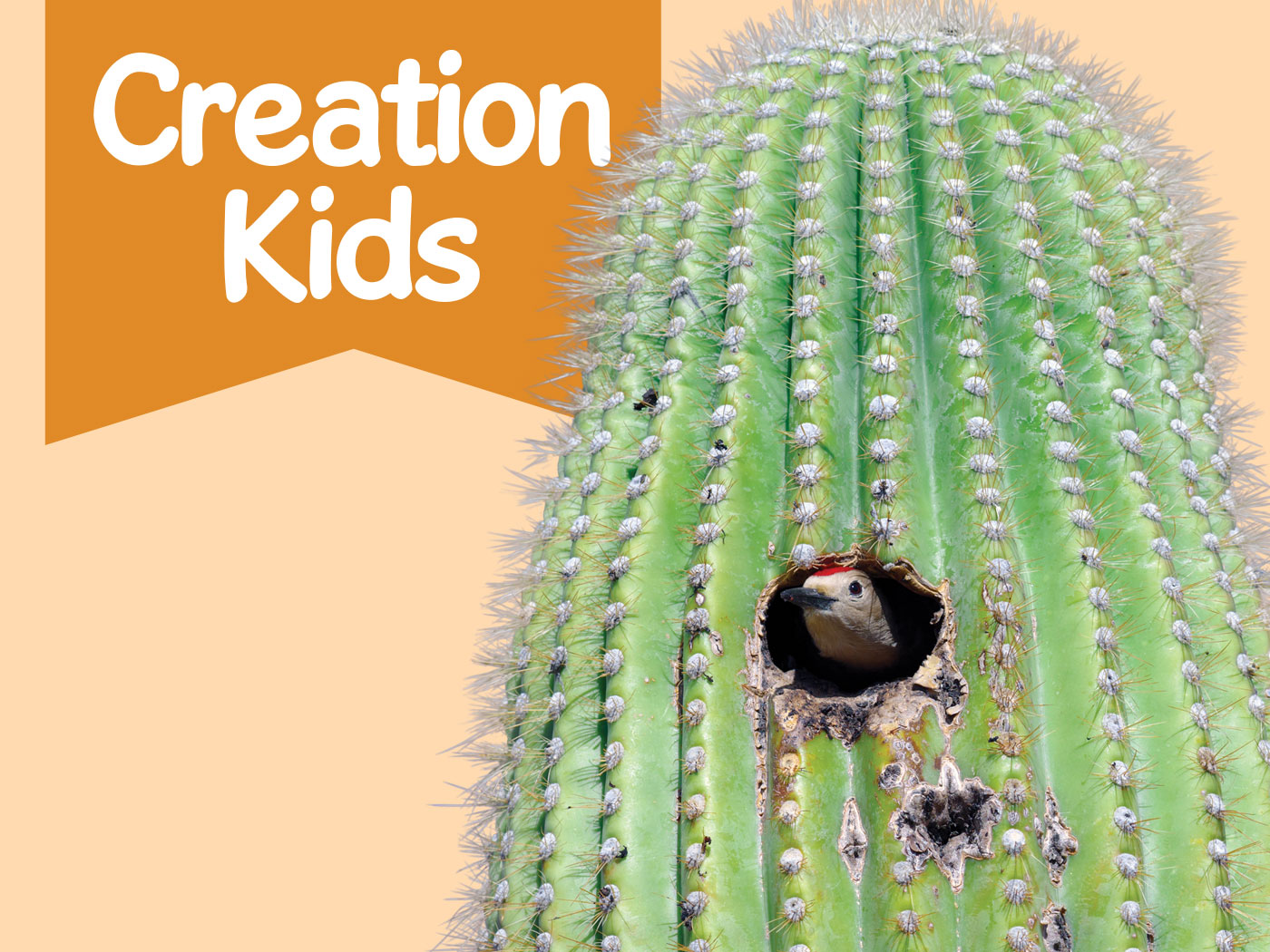The same infinite God who became incarnate as a small baby had previously created the heavens and the earth, and all of its living inhabitants. To all of God’s creatures, great and small, He gave amazing bodies, fitted to survive and thrive. Those bodies that He designed His creatures to use—as they became fruitful, and multiplied, and filled the earth—showcase irrefutable proof that God is their glorious Creator.
Four categories of those creatures will be considered to help us appreciate the One who chose to come to earth and be born in the little town of Bethlehem in order to redemptively fulfill the Messianic prophecy of Micah 5:2.
Fish
First, consider how fish have provided waterborne testimony of God’s providence ever since they were created on Day Five. Also, according to God’s kind design, fish have provided a providential service, for 6,000 years, as one of the most nutritious foods for humans.1
Fish are often mentioned in the Bible. Christ demonstrated His divine authority over His physical creation—and over the laws of physics that He Himself had instituted—by working miracles with little fish (feeding crowds of thousands on a least two different occasions; see Matthew 14:15-21; 15:32-38; 16:8-10). Christ was known to perform fish-catching miracles (Luke 5:4-9), so much so that He was recognized after His resurrection by that kind of miracle (John 21:4-8), and He even used a coin-carrying fish to pay taxes for Himself and Peter (Matthew 17:24-27)! And after Christ’s resurrection, more than once He shared fish with His disciples (Luke 24:42, broiled fish with honeycomb; John 21:12-13, fish and bread).
Earlier this year, Bryan Walsh, a science columnist for the New York Times, lamented the declining state of fish as “the last wild food,”2 alluding to a recent book on that topic, Four Fish, the Future of the Last Wild Food by Paul Greenberg.3
Paul Greenburg, himself a journalist for the New York Times, reported on the world’s piscatorial plight, illustrated by four of the world’s most commercially important fish: salmon, sea bass, cod, and tuna. Although much could be said about the commendable cuisine qualities of those four fish, it is the tuna fish4 that impressed the otherwise secular journalist to ponder the inability of evolutionary thinking to account for the tuna’s brilliant body and behavior:
Even the most confirmed enemy of “intelligent design” theories can have a hard time imagining [much less providing forensic evidence for] the forebears of these great fish inching slowly down an epochs-long evolutionary course to become modern tuna. They seem like deus ex machina incarnate or, rather, machina ex deo—a machine from God. How else could a fish come into being with a weird slot, as hard and fixed as the landing-gear slot on an airplane, into which it retracts its dorsal fin to achieve faster speeds? How else could a fish develop a whole new way of swimming where a slim crescent of a tail, insignificant in size compared to most fish tails, vibrates at astronomical speed while the rest of the body slips forward with barely any bend, pitch, or roll? And how else would a fish appear within a phylum of otherwise cold-blooded animals that can redirect the heat that its muscles throw off back into its very flesh and raise its body temperature by as much as twenty degrees above ambient conditions? Yes, the biggest tuna are warm-blooded.5
Tuna—what a magnificent (and nutritious) fish! The seaworthy body and behavior of every living tuna exhibit the design and manufacturing brilliance of He who commissioned “fishers of men.”
Crabs
The diverse crabs of the world—such as fiddler crabs, king crabs, blue crabs, hermit crabs, ghost crabs, coconut crabs, Dungeness crabs—also demonstrate Christ’s ingenious designs and providential programmings. The bodies and behaviors of crabs show how they were divinely fitted to survive and thrive in their coastal habitats around the world, so that they might “be fruitful, and multiply, and fill the earth.”6 And crabs not only display God’s glory in their biology, they can provide very good eating!7
One such crab is the fascinating Christmas Island red crab (Gecarcoidea natalis), whose famous annual migration and reproductive cycle result in an island-flooding invasion of baby red crabs. How? Imagine 25,000,000 (or even more) reproducing female crabs, multiplied by as many as 100,000 fertilized eggs per female, annually producing billions if not trillions of fertilized red crab eggs, some portion of which will survive their larval stage at sea and return “home” to the shores of Christmas Island.
The sight of this annual incursion of scuttling scarlet scavengers is beyond mere words: visit the Christmas Island National Park’s website and watch the video clips of the multi-million red crab migrations.8 Note that traffic signs show crab crossing points and local citizens shovel crabs. Crabs scoot across golf greens and brave the vicious yellow crazy ants (Anoplolepis gracilipes) in their efforts to reach the coastal waters at just the right time to “be fruitful and multiply” in accordance with their providential programming:
While the rains [of the October/November wet season] provide the moist preconditions for the [migratory] march to begin, the timing of the migration breeding sequence is also linked to the phases of the moon. Eggs are released by the female red crabs into the sea [i.e., Indian Ocean] precisely at the turn of the high tide during the last lunar quarter.
The sea level at the base of the cliffs and the beaches, where the females release their eggs, at this time varies the least for a longer period, and it is therefore safer for the females approaching the water’s edge to release their eggs. Sometimes there are earlier and later migrations of smaller numbers of crabs but all migrations retain this same lunar rhythm.9
Why do the female crabs “precisely” observe this optimal migratory cycle? Because of the providence of God, who programmed the “software” inside these crabs’ bodies for them to behaviorally do what is needed, annually, to “be fruitful, multiply and fill” their special eco-niche, a part of which involves this astounding “cross-country crustacean” crusade. This marathon migration facilitates the red crab’s life cycle, which begins as a fertilized egg in saltwater, followed by hatching at sea, followed by washing ashore as larva, followed by the shedding of the larval casings so that the crab’s remaining life is lived as an air-breathing terrestrial crab.
Sheep (and Mankind)
Sheep are another fascinating example of God’s creation. Sheep not only display God’s glory in their biology, they can provide very good eating, both as meat and through their dairy products. Different varieties of sheep display various traits appreciated by their domesticators, depending upon the variables of climate, habitat, disease resistance, type of meat, and dairy product advantages.10
Sheep are herbivores, eating grasses and grass-like roughage. Sheep chew their cuds. Similar to other ruminant animals, sheep digestion permits complex carbohydrates (including the cellulose in grasses, which are digested by microorganisms in the sheep’s multi-chambered gut) to be broken down into simpler carbohydrates that in turn are metabolized according to the sheep’s food energy needs. There is no evolutionary explanation for the detailed digestive systems of sheep—it is as if the bodies of the sheep are biochemically singing to their Creator “How great Thou art!”
Christians are often familiar with the Bible’s teachings about sheep. On the negative side, our predisposition to stray is compared to that imprudent behavior of sheep (Isaiah 53:6). On the positive side, sheep are known to recognize the voice of their shepherd (John 10:3-16). Although they generally prefer lighted places to dark ones, sheep are known to move in the dark toward the voice of their shepherd, and often they vocally respond to his or her voice. Sheep usually (although not always) tend to stay together, whether they are where they should be or where they should not be (Luke 15:4-7). Such gregarious behavior can be either good or bad. Sheep are trusting animals (Isaiah 53:7).
Of course, Jesus Himself was the ultimate Passover Lamb (1 Corinthians 5:7). John the Baptist aptly identified Christ as “the Lamb of God” who takes away (i.e., removes) the sin of the world (John 1:29).
The relationship between God and His redeemed human children is likened to that of a good shepherd and his sheep (Psalm 23; Psalm 100). Yet, unlike sheep who have a mere mortal as their shepherd, believers in Christ are created by their Shepherd:
Know ye that the Lord he is God: it is he that hath made us, and not we ourselves; we are his people, and the sheep of his pasture. (Psalm 100:3)
No human can honestly say he or she is a “self-made” man or woman. The Lord made us, and not we ourselves. The proof of this is in our own physical bodies, which we inhabit each moment of our earthly lives:
Because that which may be known of God is manifest in them [i.e., in God’s human creatures]; for God hath shewed it unto them. (Romans 1:19)
All of us know that we did not make ourselves. This author was reminded of that simple fact, recently, while watching a one-year-old child intently looking at the fingers of his hands as he turned them back and forth. Even little babies learn that they have hands with fingers that move, but their control of those finger movements must be learned—we did not invent our own fingers, so we must learn how they work, and they work according to the design of their Designer!
And, even as exceptionally trained as our human bodies may become—capable of extraordinary feats, as athletes remind us of from time to time—our physical bodies are still dependent upon our Creator God (Colossians 1:17).
Furthermore, as we age—if we live long enough to qualify for senior coffee discounts—we will learn to be even more dependent upon our Creator to sustain these physical bodies that provide daily evidence of their divine Manufacturer.11
In sum, we have a harmonious chorus of four witnesses singing out God’s glory as the awesome Creator He is: the bodies and behaviors of tuna fish, and those of red crabs, sheep—and even us.
Truly, no one has an excuse for failing to glorify and thank God for being the wonderful Creator He is. Even our own bodies testify—we might say they “carol”—that He is our great God.
References
- Christ Himself, in Matthew 7:10, used fish as an example of good food.
- Walsh, B. The End of the Line. The New York Times, July 7, 2011.
- Greenberg, P. 2010. Four Fish, the Future of the Last Wild Food. New York: Penguin Books.
- Two of the more famous varieties of tuna are confusingly named the yellowfin tuna, a.k.a. “ahi” (Thunnus albacares), and the albacore tuna (Thunnus alalunga). Note that the species name Thunnus albacares does not apply to the albacore tuna. Both, however, are well worth eating!
- Greenberg, Four Fish, 199-200.
- Regarding the beautifully complex life cycles of various crabs, see Dorothy E. Bliss’ Shrimps, Lobsters, and Crabs: Their Fascinating Life Story (New York: Columbia University Press, 1990), especially 29-38, 44-50, 53, 72-78, 108-120, 128-143, 160-179, 184-193. See also, regarding crab bodies, Handbook of the Marine Fauna of North-West Europe, edited by P. J. Hayward and J. S. Ryland (New York: Oxford University Press, 1995), 442-461.
- Johnson, J. J. S. 2011. Our Daily Bread: How Food Proves God’s Providence. Acts & Facts. 40 (4): 8-9.
- See Christmas Island National Park’s website page on the annual red crab migration at environment.gov.au.
- Ibid, quoting the transcript to “Viewing the Annual Red Crab Migration.” See also the National Geographic video clips “National Geographic—Great Migrations” (Red Crab marathon; Crab Dance; Millions of Crab Babies; Moonlit Crabs), posted with transcripts at environment.gov.au.
- Regarding the domestication and conservation of sheep breeds, and their historic importance to America’s agricultural heritage, see Harman. A. 2011. America’s First Sheep Breed: Lost Treasure Regained (Part One). Sheep! 32 (3): 50-53, available at sheepmagazine.com.
- The human body is one of the greatest proofs of God’s immeasurable glory as our Creator. For a galaxy of biological details proving this point, review Dr. Randy Guliuzza’s Made in His Image book (available at icr.org/store). See also Johnson, J. J. S. 2011. Quintillions of Creation Witnesses: Blood Service Agents Testify for Creation. Acts & Facts. 40 (5): 8-9.
Red crab image: John Tann/Flickr.com. Usage does not imply endorsement.
* Dr. Johnson is Associate Professor of Apologetics and Chief Academic Officer at the Institute for Creation Research.
Cite this article: Johnson, J. J. S. 2011. A Christmas Carol in Four-Part Harmony. Acts & Facts. 40 (12): 8-10.

















